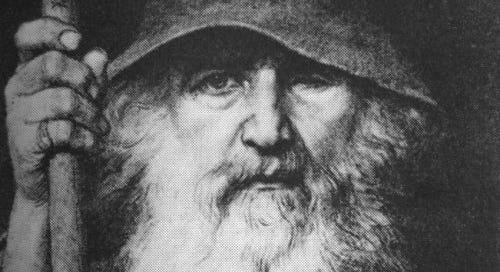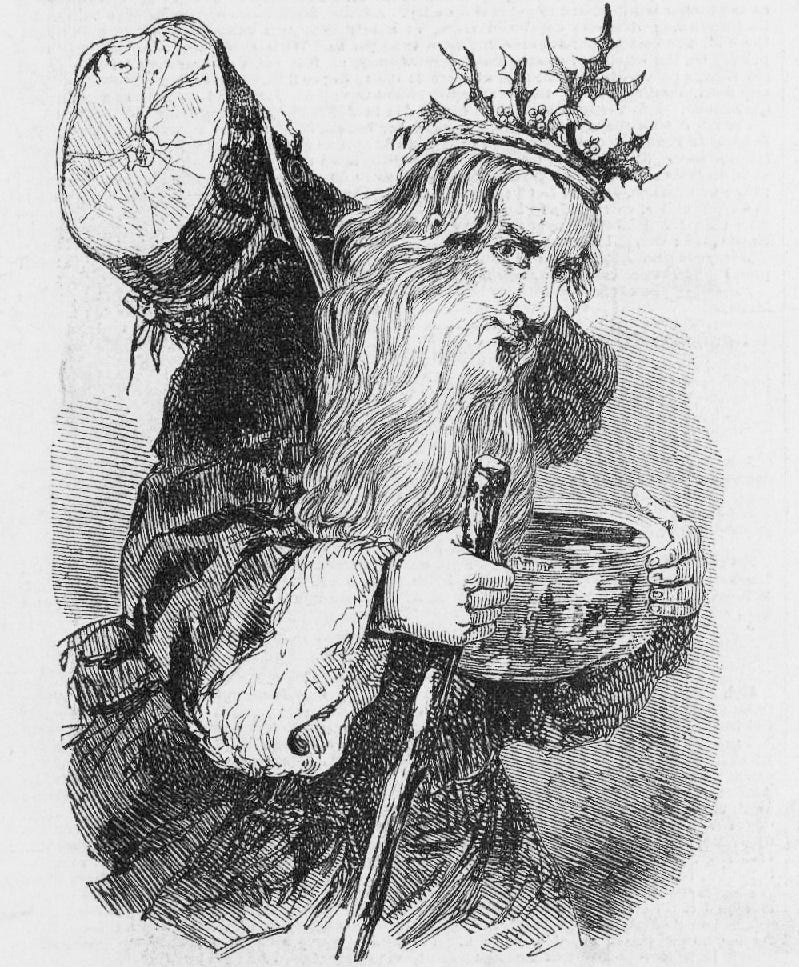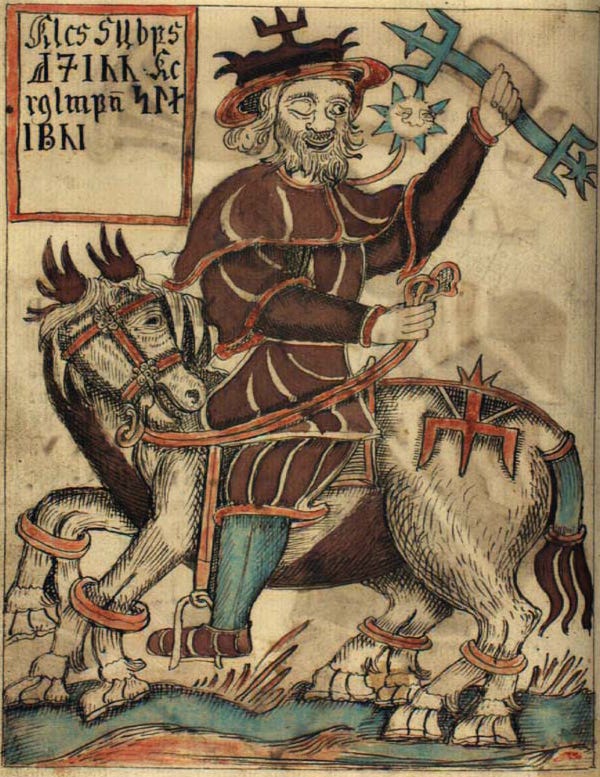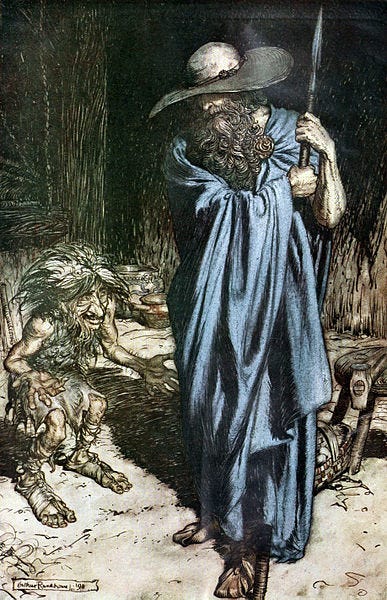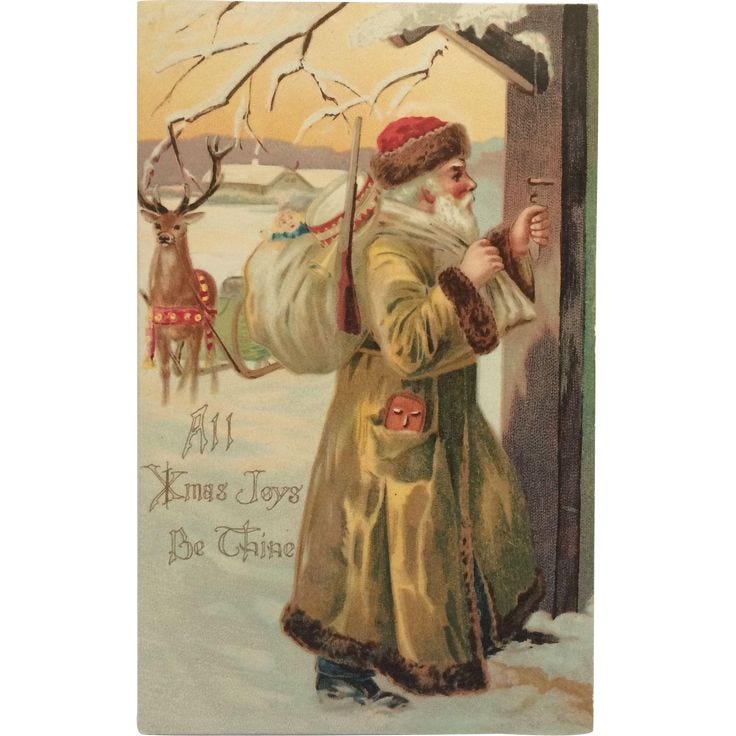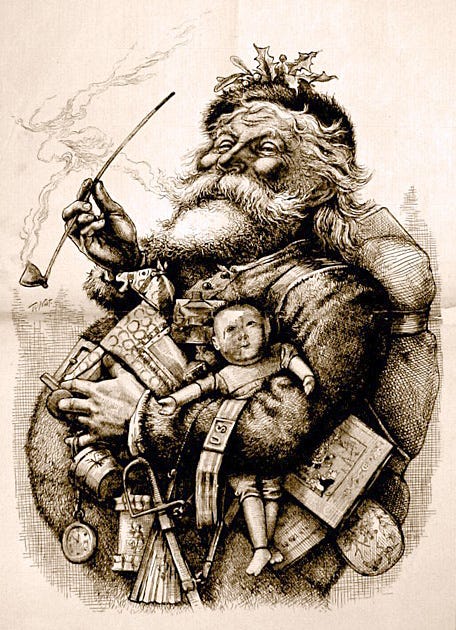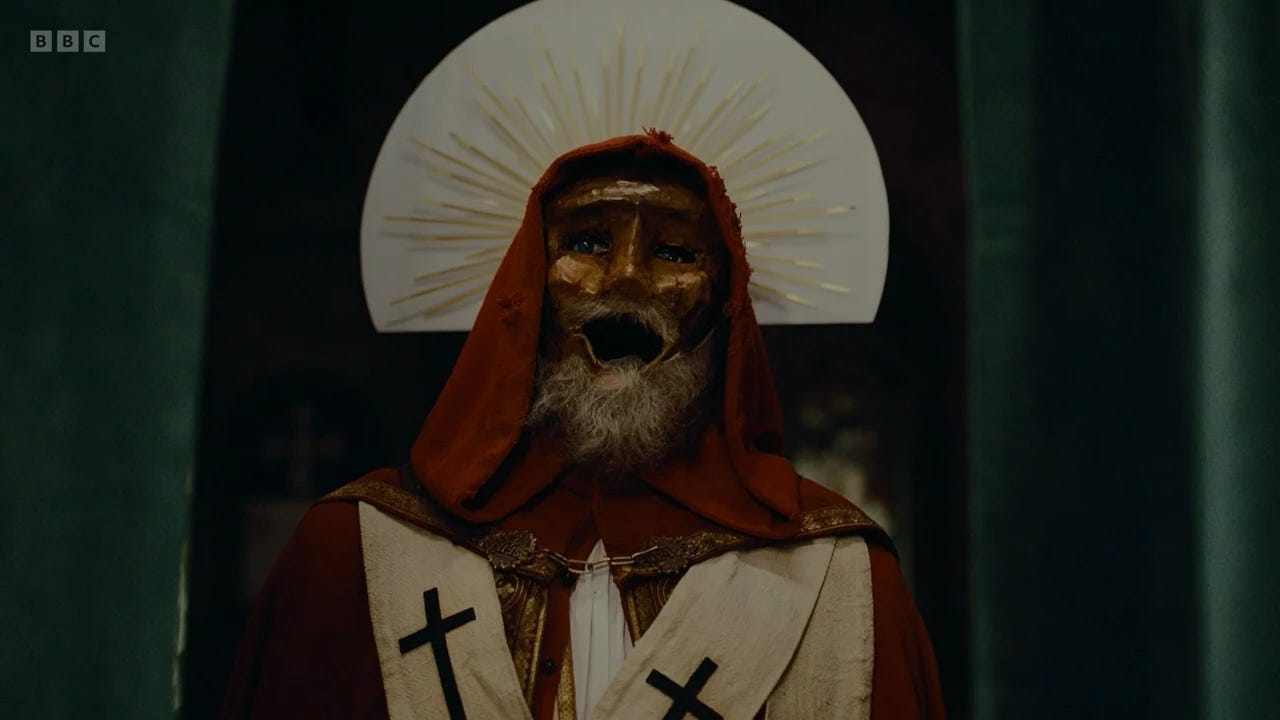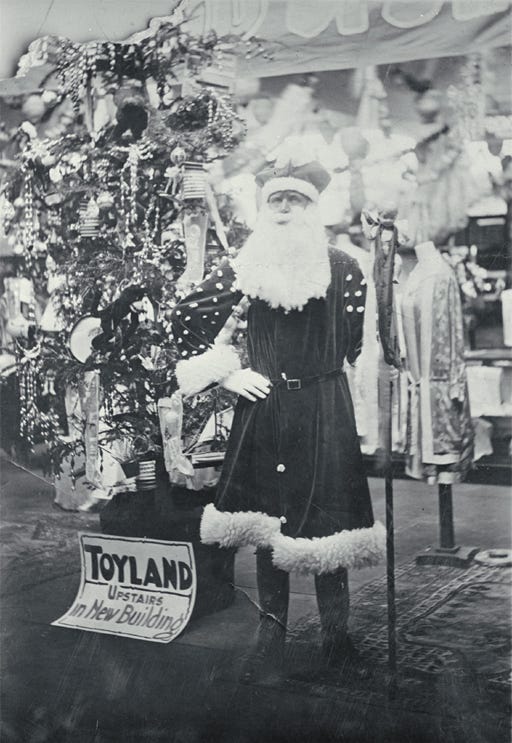Is Odin The Real Santa Claus?
This bonus blog is brought to you on Xmas eve, in place of the usual weekend post, as I am having a break this coming weekend. Have no fear, though, I will be back in 2025.*
The argument about the origins of Father Christmas or Santa Claus has been raging for what seems like many years now. One of the most intriguing and perhaps surprising theories you may not have heard, is that the All-Father, Odin is the original Santa. There are many experts who adamantly deny this connection, and several who accept the possibility that there may be at least some truth behind the rumours. When I first heard this hypothesis, it seemed entirely plausible to me; after all, Odin has many names, including both Jólnir, (Yule God) and more specifically, Jǫlfuðr (Yule Father,) which is attested to in the skaldic poem ‘Óðins nöfn’ found in the Prose Edda. It is known that He wanders the earth, interacting with humans and this makes it likely that He may have witnessed and possibly participated in Yule celebrations over the past millennia.
Odin is often credited with being the leader of the Wild Hunt, a chase involving ghostly hunters who ride at Midwinter or thereabouts. Seeing the Wild Hunt is supposed to be a portent to disaster or catastrophe, including war or plagues and possibly the death of the person witnessing it. This association does give credence to Odin’s association with this time of year, and His ability to fly cross the sky.
Jǫlfuðr is often depicted as wearing a long cloak and with a long white or grey beard, in one illustration, He is even seen wearing a red coat or cloak. The All-Father is also renowned as a master of disguise.
Odin is known to have given gifts to humankind, including the mead of poetry and as the creator god, life itself. In the ‘Hyndluliod’ found in the Poetic Edda, the goddess Freya elaborates further:
“Lets Ask Odin, lord of hosts to be kindly,
He gives and pays out gold to the deserving;
He gave Hermod a helmet and a corslet,
And to Sigmund a sword.
He gives victory to some, to some riches,
Eloquence to many and common sense to the living;
He gives following winds to sailors, turns of phrase to poets..”
(Poetic Edda. Trans. Carolyne Larrington. P245.)
So what about his mode of transport? Odin has an eight-legged horse, Sleipnir, who is said to be able to fly. In the Eddic poem, ‘Sigdrifumal’, it states that Sleipnir had Runes cut into his teeth and onto the straps of his sleigh - implying that he has pulled a sleigh, in all likelihood with his master onboard. Interestingly, in older depictions of Santa, he is seen riding a horse, which was later replaced by reindeer.
Of course, reindeer and associated lands of the north are the geographic origin of all things Norse. It is, therefore, no stretch to add the North Pole into the areas covered by Norse mythology.
Now we have looked at the similarities between Odin and Santa, let’s take a quick look at other possible origins of the jolly old fella.
It is widely known that the primary legend of Santa Claus is based largely on the story of St Nicholas - indeed one of Santa’s alternative names is St Nick or St. Nicholas. Nicholas was believed to have lived around the 3rd century CE in what is now known as Turkey. Nicholas was known for both his piety and his kindness and legends say he gave away his wealth, travelling around helping the poor and sick. A popular story about Nicholas is that he saved three young sisters from being sold into slavery by their father. His feast day is the 6th of December, which is still celebrated today in parts of Europe, with gifts are given to children who hang out their stockings.
If you are in the UK you may be familiar with the funnily sinister comedy show, Inside Number 9. A couple of years ago, the show’s Christmas special, The Bones of St Nicholas featured the origin story roughly the same as above, with added suggestions of gruesomeness and featured quite a menacing looking reliquary painting. My point in adding this information is to highlight that not all stories, especially based around belief remain the same over the centuries. Its always a good idea to do some research.
The red suited, jolly Father Christmas who famously says “Ho Ho Ho” known to millions today is largely the product of advertising by the Coco Cola company. Prior to this, he is depicted in green or other natural colours. The image of a portly jolly old man originated in the USA during the 19th century brought over by Dutch immigrants.
Just a thought…
When you hang up your stocking this evening, leaving out a glass of milk and a cookie, maybe you should consider who you are exchanging gifts with exactly?
Who do you think will be bringing your presents?
Let me know in the comments
Oh, and God Jul to you and yours. Have a great holiday and see you in 2025.
*If you cant get enough of me, then please check out my New Years post on my publishers website, The Pagan Collective around the 28th.

